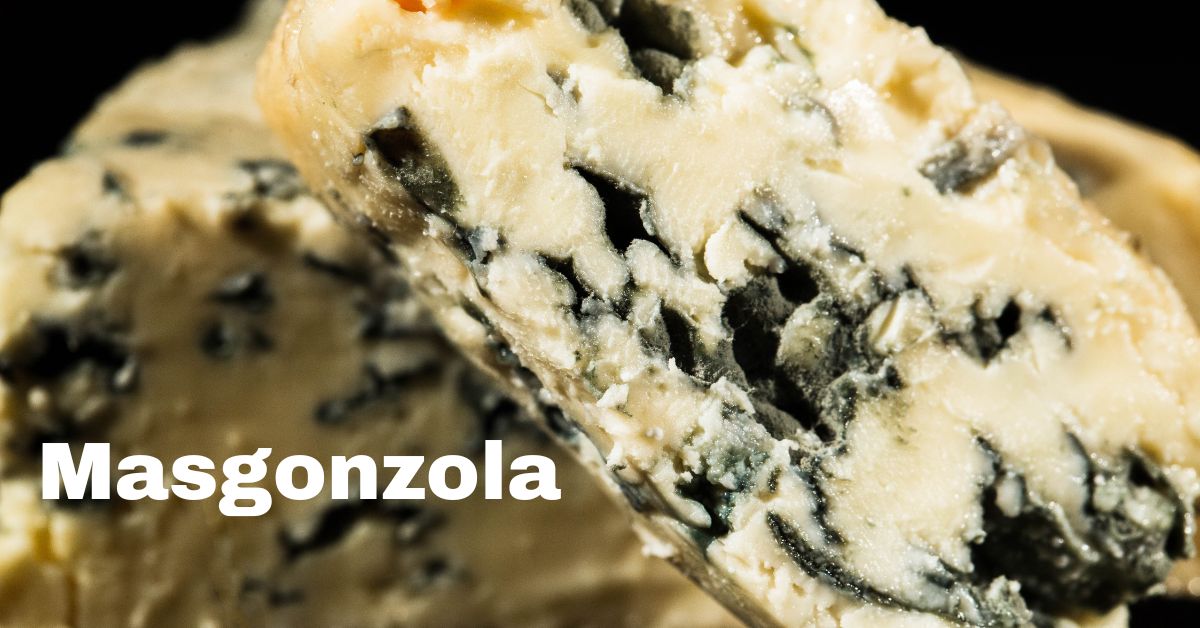Masgonzola Cheese: History, Taste, Recipes & Complete Guide

When we think of cheeses that have stood the test of time, names like Gorgonzola, Roquefort, and Stilton come to mind. But among these famous names, another fascinating variation has been steadily carving its place—Masgonzola. A cheese that blends traditional craftsmanship with unique flavor, it is a delicacy that attracts gourmets and casual cheese lovers alike.
What is Masgonzola?
Masgonzola is a type of blue cheese, often compared to its Italian cousin Gorgonzola. It is known for its creamy texture, distinctive marbling of blue veins, and a tangy flavor that balances between sharpness and richness. Its unique taste profile makes it versatile, whether eaten alone, paired with wine, or used in cooking.
Origin and History of Masgonzola
The origins are a subject of curiosity. While its exact birthplace is debated, it is widely believed to have roots in European cheesemaking traditions. Some claim it was developed as a regional twist on Gorgonzola, while others argue it was born out of experimental cheese blending in artisanal dairies. Either way, its history reflects the evolution of cheese culture, where innovation meets tradition.
The Name Behind Masgonzola
Linguistic Roots and Meaning
This name seems to be a playful or regional adaptation of “Gorgonzola.” While “Gorgonzola” originates from the Italian town of the same name, “Masgonzola” is thought to be a coined variation used to highlight either a different production style or brand identity.
How the Name Became Popular
Food lovers often latch onto unique names, and it quirky twist on an already famous cheese helped it gain attention. Over time, this distinct identity allowed it to separate itself from being “just another blue cheese” into a product with character.
Culinary Culture
Similarities with Gorgonzola
Masgonzola shares many similarities with Gorgonzola: the crumbly texture, blue-green veining, and sharp yet creamy taste. However, it tends to lean slightly towards a milder, creamier profile compared to Gorgonzola’s bold sharpness.
Taste, Texture, and Aroma
This flavor is rich and earthy, with a subtle tang that lingers on the palate. Its texture is both creamy and crumbly, allowing it to melt beautifully in warm dishes. The aroma is strong but not overwhelming, making it more approachable for those who find traditional blue cheeses too pungent.
Why Masgonzola Stands Out
Masgonzola stands out because it balances intensity with smoothness. It’s bold enough for experienced cheese lovers but approachable enough for newcomers. This balance is what has made it an emerging favorite in modern kitchens.
Production of Masgonzola
Traditional Techniques
Like most artisanal cheeses, it is traditionally made with cow’s milk. The process involves curdling, salting, and carefully aging the cheese in controlled environments where the mold can grow naturally.
Modern Innovations in Production
Modern cheese producers have embraced technology to ensure consistency in Masgonzola’s texture and flavor. Climate-controlled aging rooms, standardized mold cultures, and eco-friendly farming practices all contribute to its evolution.
Sustainability and Local Practices
Many Masgonzola producers emphasize sustainable dairy farming, using local milk and environmentally conscious packaging. This adds to the cheese’s appeal in today’s eco-aware consumer market.
Nutritional Value
Macronutrients and Micronutrients
It is nutrient-rich, offering proteins, fats, and calcium in abundance. It also contains vitamins like A, D, and B12, which are essential for bone health and metabolism.
Health Benefits
Consuming Masgonzola in moderation supports bone strength, boosts immunity, and provides probiotics for gut health.
Potential Side Effects or Considerations
Like most cheeses, it is high in sodium and fat. People with lactose intolerance or high blood pressure should enjoy it in controlled portions.
Masgonzola in Global Cuisine
From Italian-inspired pastas to American-style gourmet burgers, it has made its way across continents. It is loved in Europe for its authenticity, in North America for its versatility, and in global fusion cuisine for its ability to elevate flavors.
Pairing Masgonzola with Food and Drinks
Masgonzola pairs beautifully with full-bodied red wines like Cabernet Sauvignon or fruity whites like Riesling. Fresh fruits like pears and figs enhance its creaminess, while crusty bread and crackers provide the perfect texture balance.
Cooking with Masgonzola
From pasta sauces to pizza toppings, it transforms everyday meals into gourmet experiences. It blends seamlessly into creamy dressings, elevates risottos, and adds depth to roasted vegetables.
Cultural Significance
Beyond taste, it holds cultural weight. In food festivals and gourmet fairs, it represents both tradition and innovation, a bridge between old-world cheesemaking and modern culinary artistry.
Masgonzola vs. Other Cheeses
Compared to Gorgonzola, Roquefort, and Stilton, Masgonzola offers a middle ground in flavor. It’s less pungent than Roquefort, creamier than Stilton, and milder than traditional Gorgonzola.
Market and Availability
Specialty cheese shops and gourmet markets are the best places to find authentic Masgonzola. Prices vary depending on production method and aging period, but its unique flavor often justifies the cost.
Storage and Shelf Life
To keep it fresh, wrap it in wax paper and store it in a cool fridge. It generally lasts for two to three weeks but should be consumed sooner once opened to enjoy peak flavor.
Modern Food Trends
In today’s culinary world, it is not just a cheese; it’s a trend. From farm-to-table restaurants to health-conscious menus, chefs are finding new and exciting ways to incorporate this creamy blue delight.
Conclusion
Masgonzola is more than just another cheese; it’s a story of tradition, creativity, and evolving taste. From its mysterious origins to its place in global cuisine, it continues to captivate food lovers. Whether enjoyed on its own, paired with wine, or melted into a gourmet dish, it proves that great food is about balance—between old and new, bold and mild, simple and sophisticated.
FAQs
1. Is Masgonzola the same as Gorgonzola?
No, while they share similarities, it is considered a unique variation with a slightly creamier and milder profile.
2. Where can I buy Masgonzola?
You can find it in gourmet cheese shops, specialty markets, and some high-end supermarkets.
3. What wine pairs best with Masgonzola?
Full-bodied reds like Cabernet Sauvignon or fruity whites like Riesling pair beautifully with it.
4. Can I cook with Masgonzola like regular blue cheese?
Absolutely! It works wonderfully in sauces, pastas, pizzas, and even dressings.
5. How long does Masgonzola last once opened?
It usually stays fresh for about two to three weeks if stored properly, but consuming it earlier ensures peak flavor.
